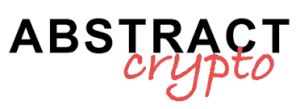The Japanese banking giant Mitsubishi UFJ Trust and Banking Corporation (MUFG) is approaching a historic milestone: the possible launch of the first Japanese stablecoin compliant with the country’s stringent regulatory standards. The project, which aims to integrate digital currency and regulatory security, could represent a turning point for the Japanese financial ecosystem and a testing ground for other countries with strict regulations.
Mitsubishi presents a stablecoin compliant with Japanese law
In a context where digital currencies are still observed with cautious interest by institutions, MUFG aims to introduce a stablecoin pegged to the Japanese yen (JPY) following the regulations that came into effect in June 2023. These regulations allow the issuance of stablecoins only by authorized depository entities, such as banks, trust funds, or financial brokerage companies. MUFG, being an authorized trust bank, fully complies with these criteria and enjoys the competitive advantage of being able to operate already in this new regulatory scenario.
The stablecoin will not be a solitary project: MUFG will use its own digital trust infrastructure “Progmat Coin”, a platform designed to allow various entities, both public and private, to issue stablecoin in a secure, traceable, and compliant manner.
Progmat Coin: a platform to develop the Japanese crypto ecosystem
Progmat Coin is a technology developed by MUFG and supported by an alliance that includes some of the leading Japanese banks. Its goal is to provide a common base for the issuance of fiat-backed stablecoin on various public and private blockchains.
This platform has been structured not only to allow MUFG itself to issue stablecoins, but also to enable other Japanese banks and financial institutions to do the same. The infrastructure allows operations on blockchain such as Ethereum, Avalanche, Polygon, and Cosmos, through a mechanism that allows the exchange and circulation of stablecoins in total security.
The strategic intent is quite clear: to develop a stable and interoperable internal market for digital yen payments, in a context where the return of criptovalute in Japan is increasingly marked after a phase of stricter regulation resulting from scandals related to exchange platforms.
Collaborate with the main crypto of Japan
MUFG has stated that it is in talks with nove exchange crypto giapponesi, which are expected to start issuing the first Progmat Coin as early as 2024. These exchanges could be the first practical cases of regulated stablecoin usage in the country. Among the major companies involved are also collaborating GMO Aozora Net Bank, SBI Holdings, and Daiwa Securities Group, which are part of the Progmat initiative.
According to reports from MUFG representatives, the bank estimates that the market for yen-denominated stablecoin could reach 7 billion dollars. A considerable volume, considering the traditional rigor of Japanese authorities towards the cryptocurrency sector.
The objective: make Japan a hub for regulated stablecoins
Japan has taken a unique position in the global landscape of digital currencies: it stands out for a legally clear and future-oriented approach, but also extremely cautious. However, the interest of MUFG demonstrates that large banking institutions are embracing the potential of a regulated crypto market, believing that stablecoins can represent a concrete and safe alternative to fiat money, especially in the digital payments sector and automated transfers on blockchain.
MUFG also emphasized that the stable Japanese regulatory infrastructure could transform the country into a benchmark, especially compared to less structured markets or those without uniform legislation. Unlike what happens in other countries, where the use of stablecoins is based on hybrid or unregulated models, Japan offers an interface between the traditional banking world and the crypto world.
The role of stablecoin in a financially secure digital era
Since Japanese law authorized the use of stablecoins, the debate has ignited on a national scale. The authorities, concerned about possible risks associated with the volatility of cryptocurrencies, see stablecoins pegged to the national currency as an intermediate solution between security and innovation. The MUFG proposal adds an additional layer of robustness to the Japanese crypto narrative: consolidated banking infrastructures and controlled legality.
This stablecoin in yen, if launched successfully, could simplify cross-border payments, instant settlements, and the use of smart contracts, bringing blockchain adoption to a mainstream level without sacrificing financial transparency.
Towards a New Era of Regulated Money in Japan
The possible launch of the first compliant Japanese stablecoin represents much more than just a technical experiment. It is the beginning of an era where the Japanese financial system could become the benchmark for the integration between digital tools and financial regulation.
MUFG is not new to innovation: just consider that as early as 2019 it had experimented with its own internal cryptocurrency. Today, years later, it takes a decisive leap in the evolution of regulated digital currency, aiming to lead the digital transformation of the Japanese banking sector.
If the project gains the favor of the authorities and the market, Japan could establish itself as one of the first industrialized countries to fully integrate a stablecoin into the national financial fabric, laying the foundations for a reliable, compliant, and future-oriented digital ecosystem.


